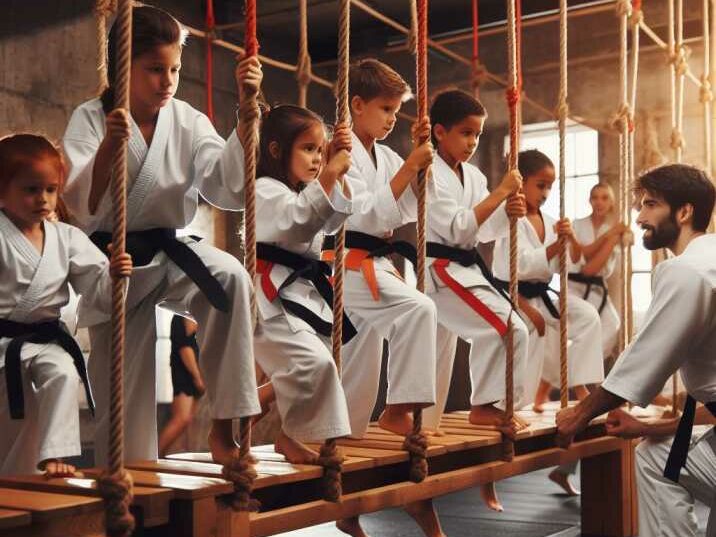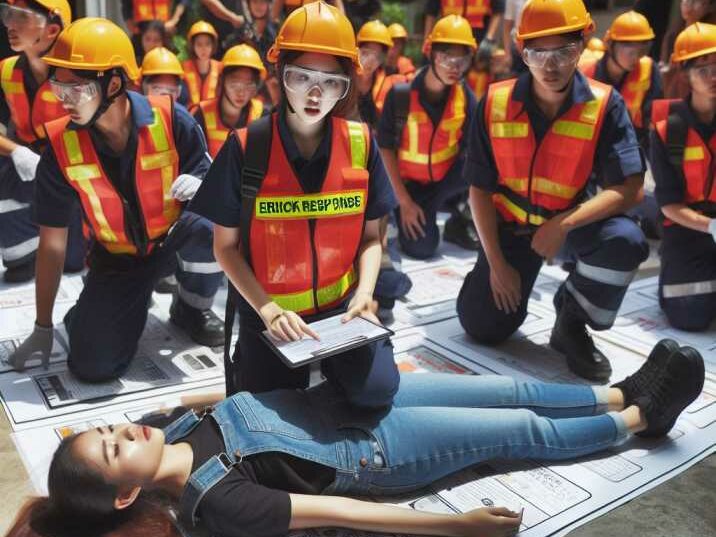Introduction:
Table of Contents
Obstacle Course Safety for Martial Art
As martial arts enthusiasts, instructors, and concerned parents, ensuring the safety of young warriors during obstacle course training is of paramount importance. In this comprehensive guide, we’ll delve into crucial obstacle course safety tips that both instructors and parents can implement to create a secure and enjoyable training experience for budding martial artists.
Understanding the Importance of Safety
Before we dive into the safety tips, let’s underscore the significance of safety in martial arts training, especially when incorporating obstacle courses. The dynamic nature of these courses adds an extra layer of excitement but requires meticulous planning to prevent accidents.

Key Elements of Obstacle Course Safety
Getting Started: Establishing a Solid Foundation
To kick things off, let’s talk about the fundamental steps to ensure a safe obstacle course experience. Martial arts instructors and parents should collaborate to create a foundation rooted in safety:
Selecting Appropriate Equipment
Choosing the right equipment is crucial. Ensure that all obstacles are age-appropriate and well-maintained. Regularly inspect them for wear and tear, replacing any damaged components promptly.
Setting Age-Appropriate Challenges
Tailoring obstacle courses to the age and skill level of the participants is key. This not only ensures safety but also helps in skill development at an optimal pace.

Navigating Potential Hazards: Identifying and Mitigating Risks
Recognizing potential hazards is a proactive approach to obstacle course safety. Here are essential steps to navigate and minimize risks effectively:
Conducting Site Risk Assessments
Before each training session, conduct a thorough site risk assessment. Identify any uneven terrain, slippery surfaces, or potential hazards that could pose risks to participants.
Implementing Clear Communication Channels
Communication is pivotal during obstacle courses. Ensure that participants understand the course layout and know how to signal for help if needed. Implementing clear communication channels minimizes confusion and enhances overall safety.
Instructing with Precision: The Role of Martial Arts Instructors
Martial arts instructors play a central role in ensuring safety. Let’s explore how they can guide and monitor participants effectively:
Providing Clear Instructions
Clear and concise instructions are essential. Instructors should communicate the rules and expectations before the obstacle course begins, emphasizing the importance of following instructions for everyone’s safety.
Monitoring Participant Progress
Active monitoring is crucial throughout the obstacle course. Instructors should keep a watchful eye on each participant, ready to intervene if any safety concerns arise.

Ensuring Accessibility and Inclusivity
Safety extends beyond the physical aspects; it includes making martial arts training accessible to all. Instructors and parents should strive for inclusivity, adapting obstacle courses for participants with diverse abilities.
Striking the Right Balance: Fun and Safety
Finding the equilibrium between a fun-filled obstacle course and a safe environment is an art. Let’s explore strategies to strike this delicate balance:
Encouraging Teamwork and Support
Fostering a sense of camaraderie among participants promotes teamwork. Encourage them to support one another, creating a positive and safe training atmosphere.
Celebrating Achievements Safely
While celebrating accomplishments is essential, ensure that these celebrations are conducted safely. Avoid activities that could pose risks during victory moments.
Conclusion:
In conclusion, obstacle course safety for martial arts instructors and parents is a collaborative effort. By following these tips, we can create an environment where young warriors not only hone their martial arts skills but also do so in a secure and enjoyable manner. Remember, safety is not a compromise—it’s an integral part of the martial arts journey.
Frequently Asked Questions (FAQs)
1. How often should obstacle courses be inspected for safety?
- Regular inspections are vital; aim for weekly assessments to identify and address potential risks promptly.
2. Are there specific age groups for which certain obstacles are not recommended?
- Yes, certain obstacles may not be suitable for younger age groups. Tailor courses accordingly to ensure age-appropriate challenges.
3. What emergency preparedness measures should be in place during obstacle course training?
- Emergency preparedness is crucial. Have a first aid kit on-site, ensure instructors are trained in basic first aid, and establish clear emergency procedures for quick response.
4. Can martial arts gear, such as uniforms and protective equipment, impact safety during obstacle courses?
- Yes, proper gear is essential. Ensure participants wear well-fitted uniforms and protective equipment to minimize injury risks during physical activities.
5. How can parents actively contribute to the safety of obstacle courses?
- Parents play a vital role. Stay informed about the course layout, encourage open communication with instructors, and support safety initiatives both at home and during training.
6. Are there specific warm-up exercises recommended before engaging in obstacle course training?
- Yes, warming up is crucial. Include dynamic stretches and light exercises to prepare participants physically and reduce the risk of injuries during the obstacle course.
7. What measures can be taken to prevent dehydration during outdoor obstacle courses?
- Hydration is key. Encourage participants to drink water regularly, especially during outdoor activities, and provide shaded areas for breaks to prevent dehydration.
8. How can instructors adapt obstacle courses for participants with varying skill levels?
- Instructors should customize courses. Introduce progressive difficulty levels, allowing participants to gradually build skills and ensuring everyone can participate safely.
9. What role does mental preparedness play in obstacle course safety for martial artists?
- Mental preparation is essential. Instructors should emphasize the importance of focus, concentration, and a positive mindset to navigate obstacles safely.
10. Are there specific guidelines for incorporating natural elements into outdoor obstacle courses?
- Yes, nature can enhance courses. However, ensure natural elements are stable, free from hazards, and do not compromise safety standards. Regularly assess and maintain these elements.
11. How can participants overcome fear or anxiety associated with certain obstacles?
- Fear is natural. Instructors should provide guidance on overcoming fears gradually, fostering a supportive environment where participants can build confidence at their own pace.
12. Is there ongoing training for instructors to stay updated on the latest safety practices for obstacle courses?
- Yes, continuous learning is vital. Instructors should engage in regular training sessions, workshops, and stay updated on the latest safety protocols to provide the best possible guidance.


